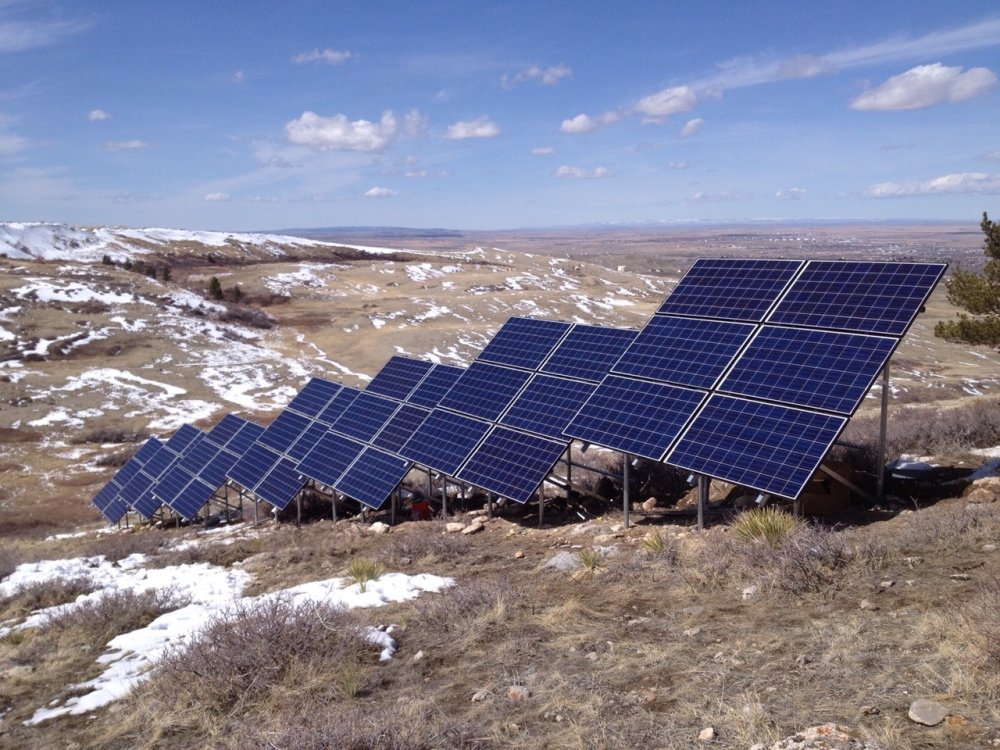Through the end of 2022, the Solar Energy Industries Association (SEIA) reports that Wyoming has installed a cumulative solar capacity of 146 MW. This is enough solar to power nearly 23,000 homes and represents about 0.5% of the state’s energy mix.
While solar does not yet have a strong presence in Wyoming, it is expected to grow. SEIA estimates that 232 MW will be added in the next five years, more than double the cumulative capacity to date.
Wyoming has invested an estimated $173 million in solar, and the industry currently employs about 150 people across 13 companies, 10 of which are installers.
Incentives
From now through 2032, Wyoming residents who install solar panels are eligible for the 30% federal Investment Tax Credit. The credit now has a transferability option, meaning if the customer does not have tax liability, they can elect sell the tax credits to someone who does have tax liability to receive the 30% credit as a cash payment.
Wyoming also offers solar customers net metering, the process by which excess solar production that is exported to the grid is credited on the customer’s monthly utility bill.
Net metering is currently valued at a retail rate, meaning that customers are offered a one-to-one value for exported power, though that is coming under threat. Current legislation being evaluated may reduce the retail rate for net metering to an “avoided cost” rate, a fraction of the price paid for retail electricity. If this legislation passes, Wyoming residents will likely have to either size their system small to avoid value losses from overproduction or attach a battery to capture their solar generation.
Another piece of legislation, SF0092, may end net metering in Wyoming. The proposed legislation first renames “net metering” customers as “small generators.” This appears to be an attempt to reclassify behind-the-meter rooftop solar power owners as power plant owners, thus opening them up to a new raft of potential regulations and costs. The law specifically notes that these parties are not “public utilities.”
The law states that Wyoming will develop a new set of regulations to compensate these small generators by April 2024, and that they will be structured to “prevent rate subsidization of customer‑generators by other customers of an electric utility.”
Notable project
About two-thirds of Wyoming’s total solar capacity comes from the Sweetwater solar project, a 98 MW installation by SOLV Energy, developed by Clenera, an Enlight Renewable Energy company. The installation consists of Trina and Longi panels, Sungrow inverters, and NEXTracker single-axis tracker mounts.
Covering roughly 700 acres, about the size of Central Park in New York, the project generates enough power to serve the equivalent of 12,000 homes each year. Most of the project is located on federal lands.
Development tool
In the interest of preserving those unspoiled lands, The Nature Conservancy (TNC) has developed a Brightfields Energy Siting Initiative (BESI) tool specifically for Wyoming, with the intention of guiding new energy development to previously disturbed areas or “brownfields.” By siting solar and wind on land previously used for fossil fuel development, the goal of the initiative is for Wyoming to diversify its energy mix without compromising the state’s iconic wildlife and natural areas.
The BESI tool identifies areas where new energy development is unlikely to encounter significant land use conflicts, permitting delays and cost overruns. It can locate sensitive places to avoid as well as provide information down to an individual project site. For example, it can determine if a potential site would risk conflict with a known mule deer migration route, a location with an abundance of cultural resources nearby or a golden eagle nesting area. It can look at habitat and can flag it as a site that would be better for restoration rather than the site of a new energy facility.
Access the BESI map tool here.
Up next
Last week, pv magazine USA toured the state of solar in Idaho, and next we will head to Nevada.
This content is protected by copyright and may not be reused. If you want to cooperate with us and would like to reuse some of our content, please contact: editors@pv-magazine.com.









By submitting this form you agree to pv magazine using your data for the purposes of publishing your comment.
Your personal data will only be disclosed or otherwise transmitted to third parties for the purposes of spam filtering or if this is necessary for technical maintenance of the website. Any other transfer to third parties will not take place unless this is justified on the basis of applicable data protection regulations or if pv magazine is legally obliged to do so.
You may revoke this consent at any time with effect for the future, in which case your personal data will be deleted immediately. Otherwise, your data will be deleted if pv magazine has processed your request or the purpose of data storage is fulfilled.
Further information on data privacy can be found in our Data Protection Policy.